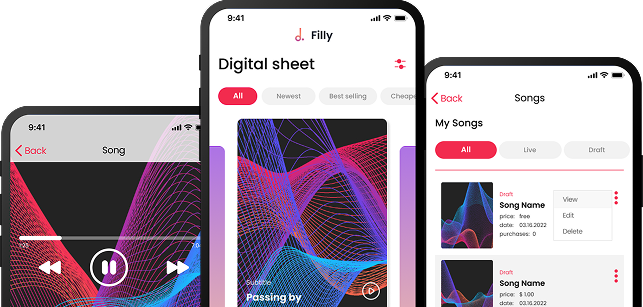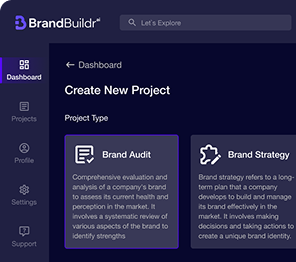User research is one of the most critical elements in the Discovery Phase of product development. It sets the foundation for building products that genuinely address user needs and solve real-world problems. Without a strong understanding of your target audience, your product runs the risk of being irrelevant, confusing, or underutilized. In today’s competitive digital landscape, getting user research right is essential for creating products that stand out and succeed.
In this article, we’ll dive into why user research is so important during the Discovery Phase, the key methods for conducting effective research, and how to use the findings to guide your product development process.

Why is User Research Crucial in the Discovery Phase?
The Discovery Phase is the very beginning of the product development journey. Its purpose is to gather as much information as possible about the target users, the market landscape, and the technical feasibility of the product. User research, in particular, plays a pivotal role by helping teams understand the audience they are building for.
Here’s why user research is so essential during this stage:
1. Aligns the Product with User Needs
The biggest reason why products fail is that they don’t solve a real problem or they fail to meet user expectations. Conducting user research helps to ensure that the product addresses actual pain points faced by your target audience. It allows you to gather insights directly from users about their challenges, needs, and goals. This alignment is crucial for building a product that is not only functional but also valuable.
2. Reduces Assumptions and Biases
When developing a product, it’s easy to fall into the trap of building based on assumptions or personal biases. Product teams may believe they know what users want without ever asking them. User research provides data-driven insights that remove these assumptions, allowing teams to make informed decisions based on real user behavior and feedback.
3. Guides Feature Prioritization
During the Discovery Phase, teams must determine which features to include in the Minimum Viable Product (MVP). User research helps prioritize features by identifying what is most important to users. Instead of guessing which features will be most valuable, teams can build an MVP that targets the core needs of the audience.
4. Improves User Experience (UX)
A product that is difficult to use, confusing, or frustrating will not succeed, no matter how innovative or powerful it is. User research helps identify potential usability issues before they become major problems. By understanding how users think, behave, and interact with digital interfaces, teams can create products that are intuitive and easy to navigate.
5. Informs Marketing and Messaging
User research doesn’t just benefit the product development team — it also provides valuable insights for marketing. By understanding user motivations, pain points, and language, marketing teams can craft more effective messaging and positioning strategies. This ensures that the product resonates with the target audience not only in terms of functionality but also in how it is communicated.

Key User Research Methods in the Discovery Phase
There are several research methods that teams can use during the Discovery Phase to gather insights from their target audience. The choice of method depends on factors like time, budget, and the specific questions you want to answer. Here are some of the most common and effective user research methods:
1. User Interviews
User interviews are one of the most direct and insightful research methods. They involve speaking with potential users one-on-one to understand their goals, behaviors, and frustrations. Interviews provide qualitative data, offering a deep understanding of how users think and why they behave in certain ways.
Benefits:
- In-depth insights into user behavior, motivations, and pain points.
- Ability to ask follow-up questions and explore topics in detail.
Challenges:
- Time-consuming, as each interview takes time to schedule and conduct.
- Results are qualitative and may need to be complemented with quantitative data.
Best for: Understanding user motivations, complex behaviors, and detailed problem-solving processes.
2. Surveys
Surveys are a popular method for collecting quantitative data from a large audience. They can be distributed online and are often used to gather demographic information, preferences, and feedback on specific features or experiences. Surveys are great for identifying trends and general user preferences.
Benefits:
- Can reach a large audience quickly.
- Provides quantitative data that can be statistically analyzed.
Challenges:
- Limited ability to explore in-depth user thoughts or behaviors.
- Responses may lack context and depth.
Best for: Collecting quantitative data on user preferences, behaviors, or opinions.
3. Focus Groups
Focus groups involve gathering a small group of users to discuss a product idea, feature, or experience in a moderated session. Focus groups provide qualitative insights and allow for group interaction, which can reveal additional insights through discussion and debate.
Benefits:
- Interactive discussions that reveal diverse perspectives.
- Opportunity to explore ideas and concepts in a group setting.
Challenges:
- Group dynamics can influence individual responses (e.g., groupthink).
- May not provide the same depth of insight as one-on-one interviews.
Best for: Exploring user attitudes, beliefs, and reactions to product concepts or features.
4. Usability Testing
Usability testing involves observing users as they interact with a prototype or existing product. This method helps identify usability issues, pain points, and areas where users struggle to complete tasks. By testing early in the Discovery Phase, teams can make informed design decisions that improve the overall user experience.
Benefits:
- Direct observation of how users interact with the product.
- Identifies usability issues and friction points in real-time.
Challenges:
- Requires a functional prototype or product to test.
- Results can vary based on the testing environment or user familiarity with similar products.
Best for: Identifying usability issues and understanding how users interact with the product interface.
5. Card Sorting
Card sorting is a technique used to understand how users categorize and organize information. In this exercise, users are given a set of cards representing different pieces of content or features, and they are asked to group them in a way that makes sense to them. Card sorting helps improve information architecture, ensuring that the product’s navigation aligns with user expectations.
Benefits:
- Reveals how users think about and organize content.
- Helps improve the overall structure and navigation of a product.
Challenges:
- Limited to information architecture and content organization.
- May not provide insights into other aspects of user experience.
Best for: Structuring information and improving navigation based on user expectations.

How to Conduct Effective User Research in the Discovery Phase
Conducting effective user research requires careful planning, execution, and analysis. Here’s a step-by-step guide on how to ensure that your user research during the Discovery Phase provides actionable insights:
1. Define Research Goals
Before starting your research, it’s important to define clear goals. What do you want to learn from your users? Are you trying to understand their pain points? Validate a product idea? Or test the usability of a specific feature? By setting clear research goals, you can focus your efforts on gathering the most relevant information.
Example Goals:
- Identify the most common challenges users face when completing a specific task.
- Understand user preferences for certain features or design elements.
- Test the usability of a product prototype.
2. Choose the Right Research Methods
Choose the methods that will provide the most relevant insights based on your research goals. For example, interviews or focus groups may be the best choice if you’re trying to understand user motivations and behavior. Surveys can provide a broader view of user preferences if you need quantitative data.
Pro tip: Combining qualitative and quantitative methods often yields the best results. For example, you can conduct interviews to gain in-depth insights and then use surveys to validate those insights across a larger sample.
3. Recruit the Right Participants
The success of your research depends on recruiting participants who represent your target audience. If your product is for working professionals, for example, make sure your participants reflect this demographic. Recruiting participants who match your user personas ensures that your findings are relevant and actionable.
Pro tip: Use tools like UserTesting, Respondent, or even your own network to recruit participants who fit your target audience.
4. Conduct the Research
Once your participants are recruited and your methods are selected, it’s time to conduct the research. Whether you’re conducting interviews, surveys, or usability tests, it’s important to maintain a neutral and open-minded approach. Avoid leading questions, and encourage participants to share their honest feedback.
Pro tip: Record sessions (with permission) to review later and ensure you don’t miss any valuable insights.
5. Analyze and Synthesize Findings
After conducting your research, the next step is to analyze the data. Look for patterns, common themes, and significant outliers. Whether you’re analyzing qualitative feedback from interviews or quantitative data from surveys, the goal is to extract insights that will inform your product decisions.
Pro tip: Use affinity mapping to organize qualitative data. Write down key points from interviews or focus groups on sticky notes, and then group them into themes or categories.

Using User Research to Guide Product Development
Once you’ve gathered and analyzed your research, it’s time to apply those insights to your product development process. User research helps guide decisions in several areas:
1. Feature Prioritization
Based on user feedback, you can prioritize the most critical features for your MVP. If users consistently mention a particular pain point or request a specific feature, it’s a good indication that this should be included in the MVP.
2. UX and Design Improvements
Usability testing and user feedback often reveal design issues that may not have been obvious during the initial design phase. Use these insights to refine the product’s user interface and improve overall usability.
3. Product Positioning
User research provides insights into how users perceive your product and its value. This can inform your marketing strategy, helping you position the product in a way that resonates with your target audience.
Conclusion
User research is a critical part of the Discovery Phase, and getting it right can make all the difference in building a successful product. By deeply understanding your users’ needs, behaviors, and pain points, you can design a product that solves real problems and delivers a seamless user experience. The insights gained from user research will guide feature prioritization, inform design decisions, and ensure that your product resonates with its target audience. In short, investing in user research early on is one of the smartest moves a product team can make.

FAQ
What is user research in the discovery phase?
User research is the process of studying target users to understand their needs, behaviors, goals, and pain points. In the discovery phase, it provides evidence-based insights that shape product direction before design and development begin.
Why is user research critical for successful product discovery?
User research reduces assumptions and ensures the product addresses real problems. It helps teams build solutions that resonate with users, improving product-market fit and lowering the risk of costly pivots later.
What user research methods are most effective during discovery?
Common methods include user interviews, surveys, usability testing, contextual inquiry, diary studies, and competitor analysis. Combining qualitative and quantitative approaches delivers a more complete understanding.
How many users should be involved in discovery research?
Even small sample sizes can be effective. Interviewing 5–10 users per key segment often reveals major usability and behavioral patterns, while surveys can validate findings at a larger scale.
How do research insights influence product decisions?
Research insights guide feature prioritization, user journeys, value propositions, and success metrics. They help teams focus on solving the most impactful problems rather than building based on internal assumptions.
What are common mistakes to avoid in user research?
Common mistakes include relying on internal opinions, asking leading questions, ignoring negative feedback, and skipping documentation. Structured research planning and unbiased analysis help ensure reliable results.
Heading 1
Heading 2
Heading 3
Heading 4
Heading 5
Heading 6
Lorem ipsum dolor sit amet, consectetur adipiscing elit, sed do eiusmod tempor incididunt ut labore et dolore magna aliqua. Ut enim ad minim veniam, quis nostrud exercitation ullamco laboris nisi ut aliquip ex ea commodo consequat. Duis aute irure dolor in reprehenderit in voluptate velit esse cillum dolore eu fugiat nulla pariatur.
Block quote
Ordered list
- Item 1
- Item 2
- Item 3
Unordered list
- Item A
- Item B
- Item C
Bold text
Emphasis
Superscript
Subscript





















.avif)



.avif)

.avif)


